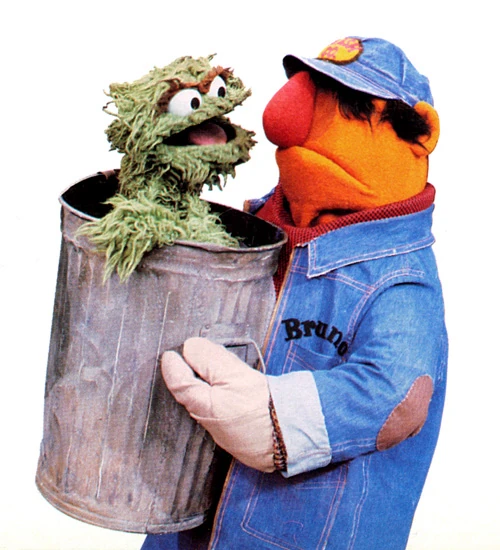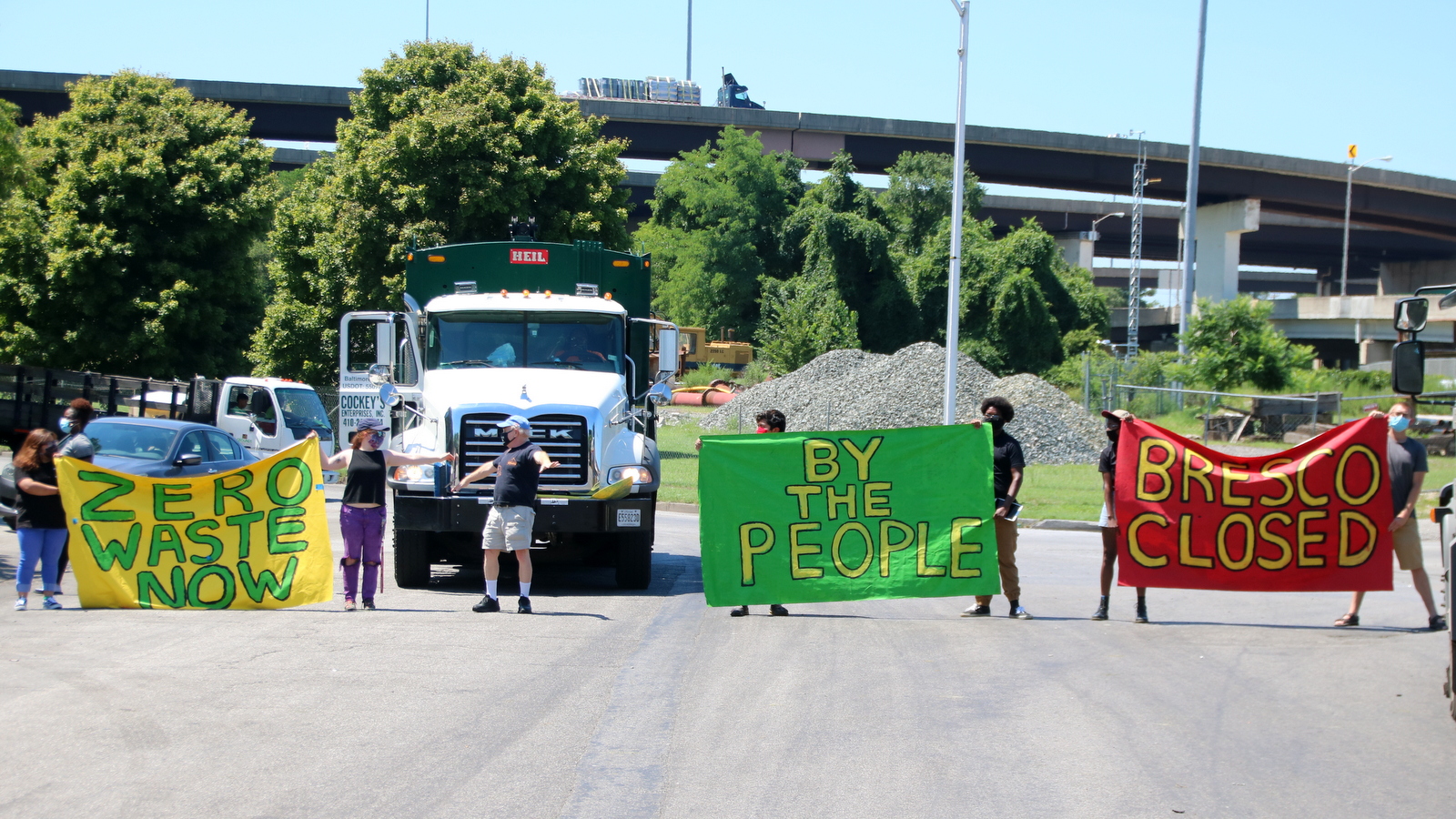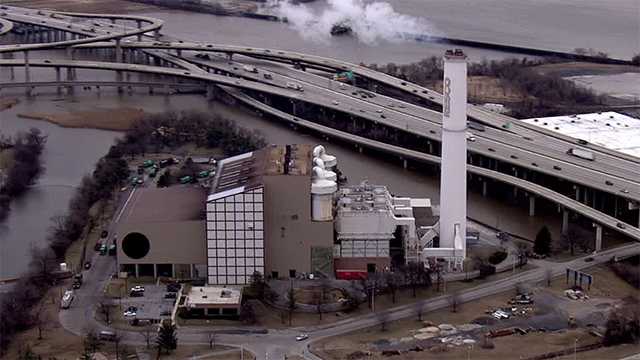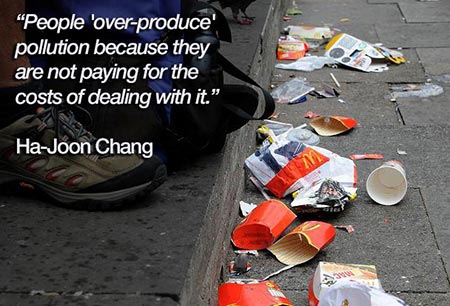|
Baltimore dubbed 'Dirtiest City in America' based on sanitation complaints data" - WBFF TV 45 (2023)
"Despite pressure from advocacy groups, the city’s 10-year waste plan anticipates landfill and incineration
assets will continue to serve a key role as the city works to increase recycling. .... 'Ninety-five percent of the
students in those schools that are surrounded by the incinerator that lives in those communities are affected by asthma,'
Hayes said. 'We must have infrastructure here to be able to separate those materials and deal with them in a sustainable
way, where it’s not causing health damages to people.' ....
In 2021, Baltimore managed 414,000 tons of waste, sending 136,000 tons to the incinerator and 210,000 tons directly to
the Quarantine Road Landfill. WIN Waste’s ash also goes to the landfill thanks to a contract with the city.
It is estimated that there are over 5 Trillion pieces of plastic in our oceans.

|
| OSCAR THE GROUCH & BRUNO THE TRASHMAN - "SESAME STREET" |
Oscar's, "Oh, I Love Trash" - "Sesame Street"
Take out the papers and the trash
Or you don't get no spendin' cash
If you don't scrub that kitchen floor
You ain't gonna rock and roll no more...
Just finish cleanin' up your room
Let's see that dust fly with that broom
Get all that garbage out of sight
Or you don't go out Friday night
Yakety yak [Don't talk back]
"Well, if you're going to the market to buy some juice
You've got to bring your own bags, and you learn to reduce your waste
We gotta learn to reduce
And if your brother or your sister's got some cool clothes
You could try them on before you buy some more of those
Reuse, we've got to learn to reuse"
"Unless we go to 'Circular' it's game over for the planet. It's game over for society."
"Our current rate of consumption is unsustainable. The production and consumption of goods is a root
cause of two of the greatest challenges the world faces: climate change and biodiversity loss. Nearly half (45%)
of greenhouse gas (GHG) emissions come from the way we make and use products and food, and more than 90% of
biodiversity loss is due to the extraction and processing of natural resources. Transitioning to a circular economy
can help turn this around."
Ah, trash. Yesterday's dreams. Imagine a trash dispose system that can be used at anytime each person wants to, instead
of collecting and waiting for that one sacred day to let go of those dreams. Imagine no more trash spills, no more animals
getting into bags, canisters, and cans, and no more blowing trash. Imagine that more recycling is done. For instance, all
you have is a bottle to dispose of that day. Instead of it going into a kitchen trash can in your house, getting filled with
other stuff, it goes immediately into recycle glass collector, and you receive money for it. Imagine recycling being a celebrated
event, rather than for some consider an arduous chore. Imagine everyone doing it. There is no wait - simply decide that
our health is more important than continuing to poison with incinerators, no matter how, "technology advanced." Imagine reducing
what we purchase, reusing in same manner used, repurpose what do have, and only at last resort recycle. Below are solutions:
trash systems that are already in high use for many years. But first there is a quite serious issue that needs to be ended.
No burning of anything is "Green " or "Sustainable." Burning of anything is pollution. And Baltimoreans are dying because
of our incinerators combined with our automobiles exhaust, making us next to Allentown, Pennsylvania, the biggest polluter
and "F" for Ozone in our troposphere. Incineration must end.
"Baltimore City Council Mounts Filibuster in Protest of Biweekly Recycling Collection During 6-Hour Hearing" - The Baltimore
Sun (2022)
An - ONGOING ISSUE
"Baltimore & D.C. Make List of Dirtiest Cities" - TV 4 (2012)
Baltimore Dubbed 'Dirtiest City in America' Based on Sanitation Complaints Data" - WBFF TV 45 (August 23rd, 2023)
Some Cuss Language
Baltimore, seek inspiration from these cities....
World's Most Polluted Cities in 2022 - PM2.5 Ranking - IQ Air (2022)
INCINERATION: NOT MUCH BETTER THAN MORE LANDFILLS
| CEASE TO EXIST |

|
| "BRESCO CLOSED" 2020 INCINERATOR PROTEST - Curtis Bay Louis Strauss ? |
"Study Finds Just 2.2% of Baltimore's Trashed Plastic is Recycled, While 47% of Collected {Recycling} is Burned" - Baltimore
Brew
"Baltimore's asthma hospitalization rates are three times higher than the national average.... The incinerator produced
on average more than 33 times more mercury per unit of energy in 2018 than the average amount produced by the state's four
largest coal plants. It also produced higher levels of nitrogen oxides, which can aggravate respiratory illnesses and lead
to the development of asthma."

|
| WHEELABRATOR BRESCO INCINERATOR |
"The Garbage Report" & "Weather" - "Beakman's World"
"Wheelabrator is Baltimore's single-largest standing source of air pollution, a major source of sulfur oxides and was
also the single-biggest nitrogen oxide emitter in the city. Ash from the incinerator makes up over 40 percent of
the waste dumped in Baltimore's Quarantine Road Landfill, which is also located near Curtis Bay.
Baltimore's asthma hospitalization rates are three times higher than the national average. While the high rates are
primarily linked to traffic pollution and poor housing conditions, facilities like Wheelabrator Baltimore can exacerbate
the problem, according to the Environmental Integrity Project, a nonprofit environmental watchdog organization."
"But a few key recommendations emerged. Namely that — unlike the university's report — the final report should
recommend Maryland stop classifying trash incineration and the burning of biomass as renewable energy. It's a categorization
many environmental groups battled in the legislature for years because of air pollution concerns. ....
'On incineration, the plan also falls short,' said Greg Sawtell of advocacy group South Baltimore Community Land Trust, which
has dedicated years of effort to protesting the trash incinerator near Westport.
The University of Maryland report notes negative health effects of incineration, but does not expressly recommend its
exclusion from the state's renewable energy program — which incentivizes the practice — nor suggest phasing
it out.
Though leaders in Baltimore {City} and Montgomery County, the site of the state's other waste incinerator, have stated hopes
to close the facilities in future years the report does not model the impact of their closure on air pollution coming from
the waste sector, which Climate Partners called, 'surprising.' Baltimore City's current contract to continue sending trash
to its incinerator lasts until 2031. 'The report could have simply acknowledged the issue and been straightforward about
it — and not doing that is a huge missed opportunity,' said Sawtell, who is Zero Waste Just Transition director at the
Land Trust, which is not a Climate Partners member.
In discussions about Maryland's waste management, the report points to a need to increase the composting of organic materials,
but didn't include incineration on a list of potential obstacles, Sawtell said. Since incinerators like the WIN Waste
plant in South Baltimore have contracts with localities such as Baltimore, they must continue to receive and burn a certain
amount of waste, potentially limiting the amount that could be diverted to composting."
"Baltimore's Burning Question: What To Do With Its Trash Incinerator" - WBUR NPR (2019)
Baltimore is Burning Trash, so We're Starving the Fire - America's Dirty Divide" - The Guardian (2021) [See inside BRESCO]
LETTER: Maryland Emissions 2017 Report - Air & Radiation Management Administration Maryland Department of the Environment
- Environmental Integrity Project
"Although motor vehicle exhaust is probably a greater source of pollution in South Baltimore than Wheelabrator, the incinerator’s
smokestacks still account for 36 percent of the entire city’s industrial air pollution, according to the climate
change advocacy organization Chesapeake Climate Action Fund Action Network. Its emissions include mercury, lead, sulfur
dioxide, and nitrogen oxides....
Ninety percent of the waste burned at Wheelabrator comes from the city and Baltimore County."
"Incineration generates dioxins and furans, which are known to cause cancer. All of this is going into the
local air, wherever people are burning waste. Women are more impacted, as they are often responsible for disposing of household
waste... Fly ash, which is everything caught by the filters. It needs to be disposed of in a hazardous waste facility...
They also emit a lot of Carbon Dioxide (CO2). In the European Union (EU), around 52 million tons per year. That's like 420,000
cars each driving a million kilometers {621,371.192 miles each car Total: 260,975,900,640 billion miles}... Policymakers
and industries put incineration in the same type of energy group as renewables; like wind, or solar, or even nuclear... But
when you look at the greenhouse gas emissions of incineration, they're actually pretty close to coal and gas, and way
far from solar, wind, and nuclear. A study commissioned by Client Earth found that controlled incineration generates
between 59% and 73% of the emissions that coal would. Classifying this energy a renewable can divert funding from more
sustainable waste management technologies."
"More than half of incinerated plastic is either 'readily recyclable' or 'potentially recyclable', according to analysis of
waste.
Some companies deceive children and teachers by supplying teaching material and hosting school trips in which misleading
environmental claims are made about incineration.
The amount of waste incinerated in the United Kingdom has more than doubled in less than a decade, up
from 6.7 million tonnes in 2014 to 15.3 million tonnes last year. Recycling has flatlined over the same period, with the
amount of incinerated household waste in England exceeding the amount recycled since 2019.
"Exclusive: Waste firms and councils accused of 'greenwashing' with false claims over burning rubbish for energy."
BALTIMORE CITY GOVERNMENT ENDORSES "DESTRUCTORS"
BALTIMORE CITY GOVERNMENT SUPPORTS - MORE SUBURBAN FORIEGN TRASH, INCNERATOR, EXPANSIVE LANDFILLS, TOXIC PILLNGS, AND LIQUID
GAS
MARCH 2023 REPORT: 10-Year Solid Waste Management Plan - City of Baltimore:
"Permit and construct lateral expansion onto Millennium Landfill" [Page 191]
"The expanded facility will be 128 acres in size" [Page 192]
• CAPEX: $99.5 million
• OPEX: Not expected to change
"Construct a large Rail Transfer Station" (RTS) Also to install a rail spur. [Page 180]
• CAPEX: $18.6 million
• OPEX: $14.4 million per year
"The City proposes to construct the Eastside Transfer Station (ETS) at the Bowleys Lane Drop-off Center ... Land requirements:
at least 10 acres [Page 177 - 179]
• CAPEX: $70.5 million
• OPEX: $30.7 million per year
• Cost offsets: $20.3 million per year
Composting Facilities
Land requirements: at least four acres [Page 186 - 188]
• CAPEX: $3.5 million per facility
• OPEX: $1.3 million per facility
Land requirements: at least ½ acre
• CAPEX: $1.3 million per facility = "mini-MRF"
• OPEX: $750,000 per facility per year
AT LEAST 42 ACRES! and COST IN EXCESS OF 99.5 + Land requirements: at least four acres!
• CAPEX: $3.5 million per facility
• OPEX: $1.3 million per facility
"Anticipated Land and Permit Requirements
Construction of the lateral expansion of QRL onto the Millennium Landfill will increase the facility’s footprint area
to 128 acres and will require the diversion of Quarantine Road and all utilities that run along the road right of way (including
a water main, gas lines, and underground and overhead electrical lines).
The expected permit requirements and approvals required for the lateral expansion of QRL are summarized below:
• Refuse Disposal Permit: Issued by MDE; major modification of existing permit
• Erosion and Sediment Control Plan: Reviewed and approved by DPW
• Stormwater Management Plan: Reviewed and approved by DPW
• Building Permit: Issued DHCD
• NPDES Permit: Issued by MDE
Potential Costs
The estimated costs for the lateral expansion and improvement of QRL are summarized below:
• CAPEX: estimated to be $99.5M for design and permitting, relocation of stockpiles at Millennium Landfill, relocation
of Quarantine Road, facility improvements, and construction of the new landfill cells.
• OPEX: OPEX is not expected to change"
5.7.2 WIN Waste {Wheelabrator, BRESCO /RESCO incinerator}
The City's current contract with WIN Waste expires in 2031. Baltimore City has adopted plans committed to maximizing waste
reduction and diversion to achieve zero waste goals and Mayor Scott has included decommissioning the use of waste incineration
in the next decade as goal 1.1 of the Mayor's Action Plan. DPW is committed to expanding options for waste diversion over
the course of the planning period. With this investment in recycling and reuse programs, the use of the WIN Waste facility
for residential municipal waste processing is expected to decline over the course of the planning period. However, a large
portion of waste disposed at WIN Waste is generated in the private sector or outside the City. Until there is universal, coordinated
adoption of waste diversion practices across public and private sectors, it is likely that the facility will continue to operate
at or near its current throughput.
"'Why is there no end game for this highly toxic incinerator?' asked Sir James Weaver, environmental justice coordinator for
Progressive Maryland. 'This is appalling. The incinerator is many times as dirty as coal. It has to go.'
Mikel Rashid, said he was recently diagnosed with asthma. 'I've been living in Cherry Hill for the last four years, and the
doctor says the only thing he can think of is the incinerator. Why don’t we have a concrete plan to get us off of Wheelabrator?
I'm agitated, and so is the community.' ....
Scott subsequently signed a 10-year extension with Wheelabrator {WIN Waste Innovations} to burn municipal trash, while vowing
in his December 2021 Action Plan to 'reduce chronic health disparities across racial and ethics groups by decommissioning
the use of waste incineration within the next decade.'"
Sorry Mayor Rawlings-Blake. Mr. Trash is great to clean up the Patapsco River and the Harbor. But the next step - burning
trash - continues to create toxic ash, and people with respiratory issues: asthma, bronchitis, and pneumonia continue to suffer
and die from air pollution complications. Known to cause cancer too. The first to formally and collectively burn trash?
Hardly. Try 141 years ago. The first incinerators were built in 1874 in Nottingham, United Kingdom, known fondly as, "The
Destructors." The first incinerator in the United States was built in 1885 on Governor's Island, New York. The third
place was Brno, Czechoslovakia in 1905. Everything back in those days was reusable or recyclable without most toxins - chemicals
our products leach these days. Would be nice that some Baltimore homes actually got that electricity, but it sadly those
soda bottles that could of been recycled into sneakers went instead for a millisecond of a blip - to the electric grid.
Mayor Pugh conceivably could of closed BRESCO due to environmental regulations. Subsequent Mayors, Young and Scott, changed
their tune of support once each becoming mayor.
"Inside WIN Wastes $45M Upgrades to its Baltimore Waste-to-Energy Facility" - Wastedive (2023)
Covanta Incinerator, the Montgomery County "Resource Recovery Facility" in Dickerson, Maryland

"My God, There is Just So Much Garbage" - "Family Guy"
"Baltimore Residents Struggle With Illegal Sumping" - WBAL TV11 NBC
"'Neighbors Against Predatory Dumping Act' Aims To Cut Down Illegal Dumping In Baltimore" - WJZ TV13 CBS
"Baltimore's Black Communities get More Environmental Citations - but no Support, say Activists" - Baltimore Banner for TV
13 WJZ CBS Baltimore (2023)
PHTHALATES: CHEMICALS IN FAST-FOOD PACKAGING
"These chemicals are approved for their use, they have the ability to leach out of these products into the food, they're
ending up in our food in our bodies and are leading to serious and irreversible health effects. That can affect the basics
of human condition - like our ability to learn, our ability to have safe and healthy families. And marginalized communities
are disproportionately being burdened."
- Associate Professor Ami Zota, George Washington University's Milken Institute School of Public Health (member of Project
TENDR)
"What You Can Do About Trash Pollution" - U.S. Environmental Protection Agency (EPA)
"Trash" - Baltimore Office of Sustainability
"Trash" - "Last Week Tonight with John Oliver" (2022)
"Taking out the Trash Rules" - "The Simpsons"
"Here's Why Baltimore County's Glass Hasn't Been Recycled For Years" - WJZ TV 13 (2020)
Are you ready for Baltimore's metamorphosis? Watch:
"No More Garbage Day! No More Trash Cans!"
Communal trash receptacles are available when people want to throw their trash away (and do anyways), no longer littering,
blowing in wind, get wet, or animal rummaged through. There will be at least one of each type of receptacle, completely sorted:
Compost/Yard, Glass, Paper, Plastic, and Other for each block to use around an intersection, so total of 2 intersections.
Freedom. Your garbage day can be once, or multiple times, even one bottle or leaf if you would like. With art, the receptacles
will fit in with entire program of intersection repair, making them meeting places.
[Intersection Repair is one of many thing I learned, experienced, and bring from 9 years of living in Portland, Oregon (2002-2011.]
With garbage trucks no longer needed to go down especially small alleys, Baltimore City saves tons of gasoline, and can move
people to other jobs - like planting trees! Growing trees in the backs of homes will allow many more trees - as vital
to have tree canopy than what the diagram shows in 33rd Street Baltimore Fishbowl article. First, getting rid of more
lanes makes the buses even slower due to still having to weave in (just like North Avenue, as painting red does not make them
be able to go faster due to parked cars....) and out. Second, use less concrete. No longer need to build or designate bike
paths, as the alleys become allee bicycle paths (seek pictures below). Instead of one bike path in the middle where
one still has to confront traffic just to get to it (think kids( on either side, there are 2, yes TWO both way bike paths
using allees are created!
"City Beautiful": $25.00 Fines for Orlando Residents for Leaving Garbage Can Too Long - WESH TV2
More at:
TRASH COLLECTION CHOICE
ALLEYS TO ALLEES: Tree Canopy ~ Garbage Free ~ Bike Paths
"Why Alleys Are the Most Important Spaces in a City" - Stewart Hicks (2022)
"How to Design a Great Street" - City Beautiful
Is a Skimmer Boat - Old Technology at its Best
"How Gasification Turns Waste Into Energy" - CNBC (2020)
"5.1. GASIFICATION INTRODUCTION" - National Energy Technology Laboratory - U.S. Department of Energy
Gwynns Falls - Leakin Park (1983)
"Los Angeles Sanitation" - Periscope Films (1958)
"Garbage Day" - Burbank Department of Public Works

|
| MORE INFORMATION - LINKS SOON! |
GASIFICATION TECHNOLOGY
................................................................................................................................................................................................................................................................................................................................
|
